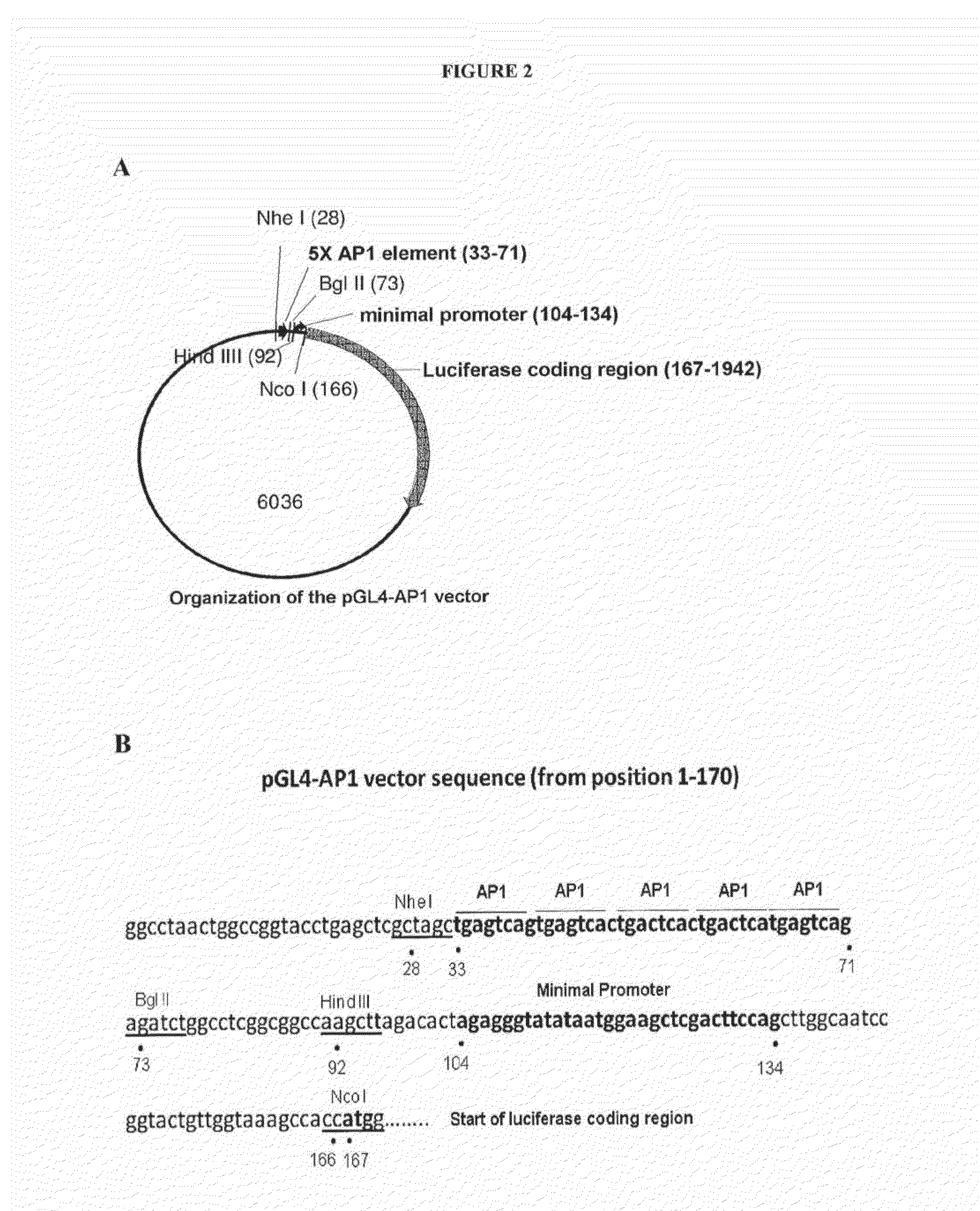Process for Identifying Novel Anti-Inflammatory Molecules with Reduced Direct Transrepression of Genes Induced by Glucocorticoids
a technology of glucocorticoids and anti-inflammatory molecules, which is applied in the field of identifying novel anti-inflammatory molecules with reduced direct transrepression of genes induced by glucocorticoids, can solve the problems of muscle weakness, delayed wound healing, and inability to distinguish between transactivation and transrepression of existing gc analogues
- Summary
- Abstract
- Description
- Claims
- Application Information
AI Technical Summary
Benefits of technology
Problems solved by technology
Method used
Image
Examples
examples
I. Material and Methods
[0196]Mice. For topical treatment, 1 nmole (nm) / cm2 MC903, at-RA or TPA; 6 nm / cm2 FA, Dex or RU24858; and 90 nm / cm2 RU486 were used. For systemic use, 100 ng / kg body weight active Vit D3, 8 mg / kg Dex and 64 mg / kg RU486 was intraperitoneally injected. GRdim mice were from the European Mouse Mutant Archives (EM:02123). Breeding, maintenance and experimental manipulation of mice were approved by the Animal Care and Use Committee of the IGBMC.
[0197]Cell culture experiments. A549 human lung epithelial cells (CCL-185, ATCC) were maintained in DMEM / HAM F 12 (1:1) medium containing 10% foetal calf serum (FCS) and gentamycin. MLE12 mouse lung epithelial cells (CRL-2110, ATCC) were maintained in DMEM / Ham-F12 (1:1) medium containing 2% FCS, 5 ug / ml insulin, 10 ug / ml apo-trans bovine, 35 nM sodium selenite, 10 nM β estradiol, 10 mM HEPES and gentamycin. Cells were transfected using Fugene 6 reagent, as instructed (Roche). For RNA isolation from A549 cells, cells were seed...
PUM
| Property | Measurement | Unit |
|---|---|---|
| insulin resistance | aaaaa | aaaaa |
| width | aaaaa | aaaaa |
| northern Blot | aaaaa | aaaaa |
Abstract
Description
Claims
Application Information
 Login to View More
Login to View More - R&D
- Intellectual Property
- Life Sciences
- Materials
- Tech Scout
- Unparalleled Data Quality
- Higher Quality Content
- 60% Fewer Hallucinations
Browse by: Latest US Patents, China's latest patents, Technical Efficacy Thesaurus, Application Domain, Technology Topic, Popular Technical Reports.
© 2025 PatSnap. All rights reserved.Legal|Privacy policy|Modern Slavery Act Transparency Statement|Sitemap|About US| Contact US: help@patsnap.com



